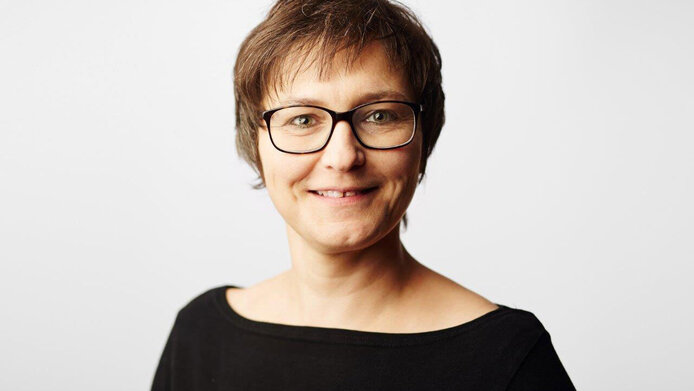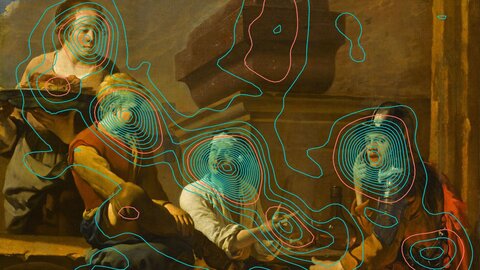Communicating the workings of science

Since 2013, the Austrian Science Fund FWF has been aiding researchers in making their insights and findings accessible to young and old alike. New projects have just been approved. What are the hallmarks of good science communication?
Beate Langholf: There is no single proven path to success, but there are criteria one can use as guidance, including the need for being clear about your target group and defining your goals in advance. The first question researchers should ask themselves is this: what do I want to communicate to whom? That is the prerequisite for being able to verify at the end whether one achieved one’s objectives. Thinking up innovative formats can be another success factor. By that I mean formats that people don’t expect in the context of a specific or challenging topic. Stagings using actors, for instance, can present facts in a different light and reach people who are not interested in research. A good way to win over new target groups, incidentally, is to implement projects in places that are not associated with scientific topics, such as a variety show or a beer garden. Moreover, participation and interaction can, of course, be important factors for successful science communication. For example, you can involve your target group as early as the planning phase.
Are there topics that are particularly well suited to science communication and others less so?
Langholf: Some people might say this is the case, but I don’t think you can make such a general assertion. It’s true that the classical formats with broad appeal to the general public, such as the “Long Nights of Science”, still focus on the natural sciences. Researchers in these disciplines can conduct experiments and set up exhibits, making it easier to get people interested in their field. Such hands-on approaches are not always easy with the humanities and social sciences. But even for these subjects, there are tools such as games or surveys where the audience can participate actively. And research in these disciplines in particular is often closely related to people’s everyday lives.
Is it better to focus on smaller target groups?
Langholf: Evaluation research experts are not particularly happy about researchers who say they want to reach the public at large. So, yes, you should indeed narrow it down and focus on selected target groups. If the format is tailored to an audience sub-group and then appeals to others as well, so much the better. And of course it also helps if projects are as accessible as possible, but that is not always feasible.
In Germany, you are very successful with “Wissenschaft im Dialog”. You organise school projects and exhibitions and operate online platforms. In what direction have the formats developed in recent years?
Langholf: Originally, we started with projects that are of broad appeal, such as exhibitions or festivals, but there has been a great deal of diversification since then. By now we also have formats that address the science community itself and the people who work in science communication. We have set up the portal Wissenschaftskommunikation.de for this purpose. The portal makes it possible to exchange experiences, to inspire and to inform, including tips about new courses of study for all those involved in communicating scientific content.
Self-critical analysis and continuous professionalisation is an important trend in our field. That’s why we now also have an Impact Unit, where we develop tools for a proper evaluation of science communication formats. Our aim is for science communicators to be able to check the impact of their projects, which in the long term would improve the quality of the measures taken.
How does science communication affect the researchers involved?
Langholf: I can only respond to that as regards my own projects. I see that getting in touch with others has an impact on people. It is also a stimulus for the researchers, especially when they talk to people who have no clue about their field. These people often come up with exciting questions, and many researchers draw a lot of motivation from that. To give you an example: for a project on genome surgery, we asked a scientist to take part in an audience debate. Initially he was very sceptical about whether this would work given the complexity of the topic, but in the end he was very enthusiastic about the format, and the exchange with the participants was also very exciting and profitable for him. A good experience of this kind can prompt researchers to enter into dialogue with people at large and try out new formats.
How can researchers be supported?
Langholf: That’s an important point, because they need the appropriate backing and support, especially from their institutions. Of course, communication or citizen science projects also cost money, which is often not available, and it’s just as important to have a respectful climate among colleagues and good support from the communications departments. We also try to motivate those who don’t often engage in science communication.
Science has now been in the spotlight for two years. The coronavirus pandemic has shown very clearly how important research is. On the other hand, many people still do not trust it very much. The latest results of the Eurobarometer are a case in point. Austria (in second to last place) and Germany (in last place) do particularly badly in an EU-wide comparison. What are the lessons to be learned from this?
Langholf: Scientific discourse has of course come into the public focus in the past two pandemic years. For many, it is still difficult to understand the scientific processes because there is never just the one study that proves the ultimate “truth”, and that is confusing. While there is now a better understanding of research in some respects, it seems to me that there is still quite some room for improvement. The coronavirus has shown that it is increasingly important to communicate not only scientific content, but also the processes behind it.
For the scientific community, it is normal to have discussions of methods and results; to the outside world, this can seem like a dispute. And if, on top of that, the recommendations of scientists and the decisions of policy-makers contradict each other, people find that unsettling. In Germany, trust in science is actually much higher than trust in politics. According to the latest results of the Science Barometer, more than 60 percent of the German population have every confidence in research. But those who do not trust it at all are very vocal at the moment.
The Eurobarometer survey confirms that many people don’t really know how research works. What specifically do we need to do to change this?
Langholf: In Germany the next Science Year will be devoted to precisely this topic: how does research work? On the one hand, it will explore the question of which major research topics people find important and do so in a participatory way. On the other hand, it is also about showing how scientists work. In day to day research activities, results may contradict each other, errors can occur or experiments can go wrong, but this does not mean that science per se does not work. It is precisely the corrective element and the consideration of new findings that are an integral part of science. Communicating these processes is important.
And it also helps if the individuals behind the research become visible. Scientists are “regular folks” and outside their field of expertise they are usually amateurs, just like everyone else. This is why for some years now efforts in science communication have focussed on communicating the processes involved, as well as on exchanges on an equal footing. You have to enter into dialogue with people and they should be able to engage and contribute.
In Austria, there has been a discussion for some time about investing part of state media funding in strengthening science journalism. What is the role of the media in science communication?
Langholf: Precisely because science is important for society as a whole, it is necessary for a functioning democracy to have well-functioning science journalism. One should not confuse this with the science communication produced by scientific institutions. Both are important and should not be in competition with each other. Moreover, the pandemic has shown that it is increasingly important even for journalists working in other spheres to have a certain grasp of scientific methods.
How has the pandemic affected your work and your projects?
Langholf: It was and still is a challenge, as fewer physical-presence events can be organised for the time being. But that in itself has also brought small boosts in innovation, because it has now become more accepted for projects to be implemented digitally. Some of this will certainly remain after the pandemic. For example, we wanted to organize a “Fashion Hack Day” during the Bioeconomy Science Year. This was not possible in a physical presence format, so we switched to digital and spread it out over several dates. And that worked surprisingly well. The majority of participants stayed with us for several weeks, even though digital support is of course very different from support you can give to people face to face.
Beate Langholf works at Wissenschaft im Dialog (WiD), an inter-organisational initiative for science communication in Germany. Langholf’s activities include designing formats for science communication and she is responsible for WiD’s exhibition projects. She is a member of the jury of the Science Communication funding programme of the Austrian Science Fund FWF.
Promoting science communication
Since 2013, the Austrian Science Fund FWF has provided annual support to researchers in implementing innovative projects to communicate basic research to the public. With funding of up to EUR 50,000 and a term of one year, FWF-funded researchers from all disciplines can expand their communication activities through the special “Science Communication” funding track. “Science Communication” thus enables researchers to enter into a dialogue about science with citizens in a targeted manner, whether in the city, in the countryside, on stage, at school or on the Internet.





